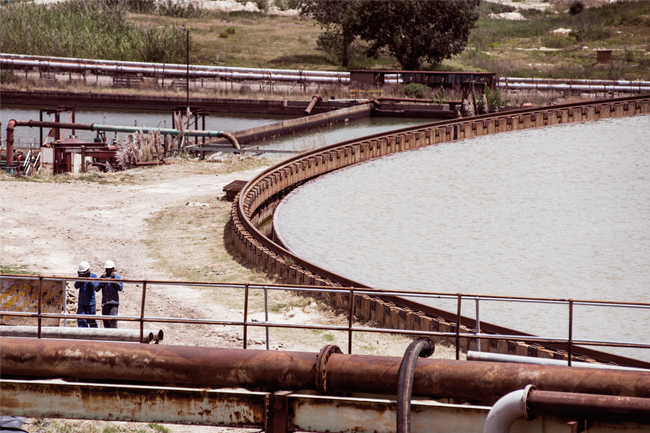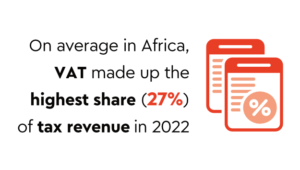The water stress in Southern and Central Africa is at its worst since 1992, according to South Africa’s Department of Water and Sanitation. The El Niño phenomenon – which brings periodic dry conditions – is estimated to peak early this year and will add to the dire situation by leaving river and reservoir levels dangerously low throughout the region.
Five provinces in South Africa – KwaZulu-Natal, Free State, Mpumalanga, Limpopo and North West – were declared drought disaster areas in November 2015, and in January 2016, the City of Cape Town announced that it was implementing tighter water restrictions. The perceived crisis has now brought the role of water use in mining into the spotlight. Even though the industry tends to have a bad reputation, the negative reporting has provided a motive for improvement.
Today, mining companies pump enormous resources into water stewardship for reasons of self-interest, to comply with strict regulations, and to earn their social licence to operate.
Competition between the mining industry and other users of water is sometimes perceived to be a zero-sum game. However, while this is an inherent characteristic of a non-renewable resource such as water, the mining industry only uses 2.5% of water abstracted from dams in South Africa, compared to the agricultural sector’s 60%. A further 27% of the total is absorbed by domestic use, trade and services take 8% and manufacturing 5%.
With that said, this small proportion of total water use does not absolve the industry from responsibility. Firstly, competition for water is a reality. The Department of Water and Sanitation has argued that South Africa has fully allocated 98% of the county’s water sources, which leaves only 2% to be further divided.
Furthermore, many of the most important mineral resources are found in very dry parts of the country. The enormous coal reserves in the Waterberg constitute 40% of South Africa’s reserves but most cannot be mined because there is simply not enough water available to do so.
Coal mining is especially water-intensive due to the need for dust suppression, and the coal must be washed before being fed into power stations such as Medupi, which is currently under construction in the area. This makes the future development of mining a macro-infrastructure issue.
Peter Shepherd, partner and principal hydrologist at mining consultants SRK, says that from this perspective, ‘the entire Vaal scheme was developed primarily for mining the Witwatersrand’.
Future development depends on implementation of the Department of Water and Sanitation’s bulk infrastructure plans. Shepherd points out that there are recent case studies to show how mines can partner with government on this.
It is not always easy for the private sector to involve itself in these bulk water infrastructure projects. The contribution sought by government is often financial, in return for which the mining company receives assurance of a secure off-take agreement. However, few mines can make the commitment upfront as they have no way of knowing what the price for their commodity will be years down the line.
Nevertheless, there are examples of successes, such as the Lebalelo scheme. The project – which supplies the platinum mines near Steelpoort and Burgersdorp – required mining companies to contribute ZAR200 million to the programme that will link the area to the Olifants river.
Water efficiency in South Africa’s mining sector has improved by a figure of 30% to 40% over the past decade
The lagging construction of bulk infrastructure is one consequence of the depressed international commodity market. Miners are simply not in a position to make commitments that may drive them into bankruptcy in the future. The result, as Shepherd observes, is that ‘we are not building infrastructure fast enough. We cannot delay infrastructure development as we did with our power stations or we will face a bigger crisis than Eskom. You can operate without electricity, you can’t live without water’.
Though, at an enhanced localised level, the mining industry is making a more meaningful contribution. The industry may be critical to the national economy and a major generator of employment and industrial linkages but it is much disliked. Historically, mining has been both exploitative and rapacious, ripping wealth from the ground and leaving little behind except problems.
In this day and age, mining is required to deal with both legacy and social issues, and this necessitates a massive effort in water stewardship. Mines have to ensure that they share water equitably with local communities and that their waste water is potable. When the dry season leaves, dam levels slow in the North West province and the platinum mines around Rustenburg are required to cut their water usage in favour of domestic consumption. This simply conforms with South Africa’s constitution that lists access to water as a basic social right.
In many ways, a model for mine-community relationships in water is the eMalahleni water reclamation plant situated in the Mpumalanga coalfields and commissioned in 2007. The word ‘emalahleni’ is in fact an isiZulu one meaning ‘place of coal’. Nine of the Anglo-American-owned Coal SA’s 10 collieries are located nearby and rely on the eMalahleni municipality for water.
Mines in the area, including some of those owned by Coal SA and BHP Billiton, came together to build a water reclamation plant to not only secure their own supply but to contribute to the municipality’s water requirements too.
‘The eMalahleni water reclamation plant was designed with sustainability in mind,’ says Coal SA CEO Themba Mkhwanazi. ‘It takes into account the remaining 20 to 25 year life of contributing mines, and will cater for communities long after our mines close.’
The eMalahleni plant effectively restores water to potable standard after it has been used for mine processes. It was expanded from a capacity of 30 megalitres (Ml)/day to 50 Ml/day in 2014, and today meets 12% of the municipality’s drinking water needs.
Emalahleni has been acclaimed as an example of best practice and inspired similar plants on the Mpumalanga coalfields. Glencore brought a 15 Ml/day treatment facility into operation in Hendrina in 2010 and is partnering with BHP Billiton to build a plant to supply Middleburg. Mkhwanazi’s concern with post-closure issues is a sign of the times.
Shepherd argues that water efficiency in South Africa’s mining sector has improved by a figure of 30% to 40% over the past decade. Mines have found ways to cut wastage, recycle water and use non-potable water where possible. According to Shepherd, he has ‘never seen the mines take [water conservation] so seriously’. Many of the activities fall into the category of earning a licence to operate or being a good corporate citizen. Hydrocarbon giant Sasol, for instance, has fixed leaky taps and toilets for 114 00 houses and 94 schools in Gauteng’s Emfuleni local municipality, which includes Vereeniging and Vanderbijlpark as well as the historic township of Sharpville. Emfuleni is 10 km north of Sasol’s home base in the town of Sasolburg.
Among the reasons for the mining industry focusing on reputation issues was the negative hype around the acid mine drainage (AMD) issue in the Highveld. It is often assumed that AMD is a consequence of the industry callously pumping and abandoning water that it has polluted back into local water basins and catchment areas.
CNBC Africa reported on the AMD problem in not untypically apocalyptic terms: ‘Acid mine drainage is the water waste that comes out of mines. This is water that has been used to flush out excess ore. All that water then flows into rivers and lakes and it is so polluted, it’s basically liquid metal. If you drink it, you die.’
In fact, AMD is not the same thing as heavy metal contamination of water, which is indeed extremely dangerous. Pumping heavy metals into the water system is both a criminal and moral offence. AMD is the product of a natural process that occurs all the time, irrespective of whether mining is happening or not. It is a result of the oxidation of metal ores upon exposure to air and water, which creates an acidic compound.
Mining’s main contribution is to expose a much more extensive surface to the process. This is not to suggest that AMD is desirable or that the waste water is potable but it is an issue that is manageable.
The big problem in the Highveld was the AMD build-up over many years in abandoned mines. Until 2002 there was no legal requirement that mining companies deal with the legacy problem.
AMD can be easily dealt with by adding lime to neutralise the acid. Any mining company that does not act responsibly in this area today is acting illegally in terms of the Mineral and Petroleum Resources Development Act and is likely to lose its licence.
There is no doubt that legacy issues are far more prominent in the minds of mine bosses today than they were in the past.
Under drought conditions, their commitment to cleaning and then sharing potable water with local communities is pushed to the limit. During the present El Niño occurrence they appear to be passing the test.
















